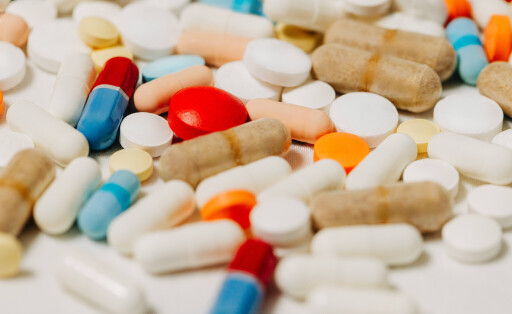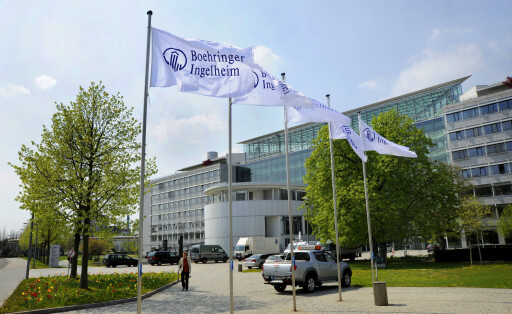The pharmaceutical industry in China is one of the key industries in the People's Republic. Its pharmaceutical market is the second largest in the world and a growth sector. The Table.media editorial team provides all the news on this topic. Pharmaceutical industry in China The pharmaceutical market in China is the second largest in the world. The market has been growing rapidly for decades. In 2018, the market volume was already at USD 137 billion. Sales in the People's Republic currently account for around eleven percent of global sales. Market observers assume that the pharmaceutical market in the world's most populous country (1.4 billion inhabitants) will grow to USD 170 billion by 2023, with more optimistic forecasts by the consulting agency GlobalData predicting USD 200 billion by 2022. The driver of this growth is the increasing prosperity of the population in China. As in Western countries, the number of cancer and diabetes cases in China is growing rapidly in line with prosperity. European and American companies are profiting from the Chinese pharmaceutical industry Companies from Europe and the USA are benefiting greatly from the enormous growth of the pharmaceutical industry in China. Merck & Co. almost doubled its sales in China in 2019 compared to the previous year. Astrazeneca was also able to grow by around forty percent in 2019. Although these figures are all from pre-coronavirus times, the momentum is still impressive: while the pharmaceutical market in Western countries is stagnating, sales in China are boosting the Group's results. Similar to the automotive industry. While Pfizer, for example, is struggling with stagnating figures, the company grew by a total of thirty percent in China in 2018 and 2019. Companies that have been producing in China for a long time and are considered established can benefit from the boom of the past ten years. Which pharmaceutical companies produce in China? Leading American and European pharmaceutical companies have production facilities in China. Pfizer, Astrazeneca, Novartis, Sanofi, Bayer and Roche are among the largest pharmaceutical companies based in China. According to the China National Pharmaceutical Industry Information Center, there are a total of 4,800 pharmaceutical companies in the People's Republic. They produce in the areas of basic materials (49%), traditional Chinese medicine (30%) and biotechnology (16%), and because of this distribution in the pharmaceutical industry in the People's Republic, there is no Chinese company that is among the global technology leaders. The population largely relies on traditional Chinese medicine. Those who use medicines tend to take the products of foreign companies if they can afford them. There is a deep mistrust among the Chinese population towards their own pharmaceutical industry. China: widespread cancer In China, the number of cancer cases is increasing dramatically. This is due to increasing prosperity, higher life expectancy and demographic change in the People's Republic. There are currently around 4.3 million cases of cancer per year in China. Twice as many as in the USA, seven times as many as in Germany. In the next twenty years, the number of cancer cases in China is expected to rise to 6.7 million per year, and the pharmaceutical industry in China is responding to the rising number of cancer cases. The joint venture between the American Amgen Group and the Chinese Beigene Group has specialized in the development of cancer drugs. Its biggest competitors in this market are Merck & Co. and Astrazeneca. Structural change in China's pharmaceutical industry The Communist Party of China (CPC) has already taken measures to strengthen the pharmaceutical industry for the future. The "Healthy China 2030" program has been running since 2016. This program includes plans for prevention and education of the population. The Chinese health insurance system will cover significantly more medicines by 2030. This is to be achieved through tax rebates on medicines. In 2019, 129 new preparations made it onto the list of medicines that will be reimbursed, and China will also promote the development and approval of new medicines in future. There are generous subsidies for research and shortened approval processes. This also applies to foreign companies that are active in the pharmaceutical industry in China. The Communist Party hopes that this will lead to more innovation in this sector. Until now, large pharmaceutical companies have made a lot of money with older preparations in particular. Problems for companies in China's pharmaceutical industry However, China is also putting considerable pressure on companies operating in the pharmaceutical industry. Drugs can only be sold in large quantities in China if they are on the health insurance company's approval list. To get on this list, however, the companies have to grant massive discounts. The rating agency Moody's estimates that pharmaceutical companies have to sell tried-and-tested drugs for half the former list price, and the price pressure is compounded by a steadily growing number of competitors from China itself. The Communist Party has designated the pharmaceutical industry as one of the ten key industries in the "Made in China 2025" program to ensure that the People's Republic becomes a modern state and a global technology leader. There is currently no leading Chinese company in the field of drug development. High subsidies and market consolidation should change this in the medium term. Made in China 2025 and the pharmaceutical industry in China Made in China 2025 is a long-term strategy with which the Communist Party wants to modernize the economy of the People's Republic. The country wants to shed its image of being just the world's workbench. China is striving to become a global power and technology leader in key technologies of the future. Ten key industries are to achieve this goal. In addition to the pharmaceutical industry, these include energy saving and electromobility, aviation and aerospace technologies and agricultural machinery, etc. Made in China 2025 is a long-term project. Many of the plans set targets for the key industries for the year 2049. The year in which the People's Republic of China celebrates its centenary. The goals of the plan include increasing the innovative capacity of the domestic industry, improving product quality and building their own brands. Where are the most medicines produced? The largest producers of medicines are China and India. Around 90% of all antibiotics used worldwide come from these regions. Because competition and cost pressure are enormous in the pharmaceutical industry, manufacturers are switching to countries with low wage levels and low environmental standards. The manufacturer named in the package insert only has to handle the production step, i.e. the final inspection. Due to the enormous demand, large pharmaceutical industry clusters have formed in China. Beijing, Shenyang (Liaoning Province), Yangzhou (Jiangsu Province) and Hangzhou (Zhejiang Province) are home to large pharmaceutical manufacturers in addition to chemical and pharmaceutical production. List of all chemical and pharmaceutical clusters in China: List of all universities with a study and research focus in the field of chemistry and pharmacy in China: Research and development of the pharmaceutical industry in China Due to China's massive subsidies for its own pharmaceutical industry, the establishment of corresponding clusters and research and study opportunities, the People's Republic is also gaining in importance as a development location for European and American pharmaceutical companies. In 2016, Novartis alone invested around one billion dollars in the establishment of a research and development center in Shanghai. The Merck Group's research center opened in Beijing in 2009. This was followed by the opening of an innovation center in Shanghai in 2019.the pharmaceutical industry in China is facing a major structural change. The government in Beijing wants to turn the sector into a major driver of innovation in the future. At the same time, large European and American pharmaceutical companies want to profit from the enormous growth. The Table.media editorial team therefore provides all the news on the pharmaceutical industry in China.

Strategic risks: China’s growing power over Europe’s pharmaceutical supply
A large share of the medicines prescribed in Germany are linked to Asian supply chains – from antibiotics to diabetes medication. This is particularly tricky: Even where India dominates as a producer, the crucial preliminary products often come from China.
By Julia Fiedler

